If you are in the market for a chandelier (or any other light fixture with crystals), you need to know the facts about the chandelier crystals that are used in the wide variety of fixtures available today. This important information will help you make the right purchasing decision for your style, room and budget. Plus, you can impress your friends and family with your newfound knowledge about chandelier bling!
The basics of chandelier crystals
All crystals are made of glass. However, the glass used to craft chandelier crystals is very different from the glass in your windows, drinking cups, eyeglasses and so on. Crystal contains lead oxide, which gives it more weight and more refraction than normal glass. This means crystal is more brilliant, sparkles more and is prismatic.
Lead oxide content is important in crystals for chandeliers, but it is also safe for the health of consumers. The rule is that the more lead oxide there is in the crystal, the better it reflects light, so a higher lead oxide content is better. There are three broad types of lead oxide content:
1. Crystalline is glass with 6 to 10 percent lead oxide, though American standards allow clear glass with any amount of lead oxide to be called crystal.
2. Half lead designation means 24 percent to 30 percent lead oxide.
3. Full lead crystal is anything over 30 percent lead oxide.
There are three basic methods of crafting crystals for chandeliers: machine cut, hand cut and hand-blown.
Machine cut crystals produce sharp facets, precise polishing and visual purity.
Hand cut crystals are sometimes crafted with traditional methods that use irons and sandstone wheels for cutting, followed by polishing on a wood wheel with marble dust in it. But hand-cut crystals are also made with more modern methods. Some varieties of hand-cut crystals include Czech, Heritage, Regal, Crystalique and Turkish.
Venetian and Murano crystals are hand-blown by artisans instead of cut, so the crystals have smooth, rounded edges. The mouth-blown craftsmanship results in one-of-a-kind heirloom quality pieces that are works of art.
Types of chandelier crystals
Now that you know the three basic methods of crystal crafting, here are some crystal types that you may see when shopping for chandeliers.
Rock crystals (as seen here in the Schonbek Renaissance) were seen in the earliest crystal chandeliers, which date back to the 16th century and displaced actual wax candles as the method of amplifying and reflecting light. However, genuine rock crystal chandeliers are often only seen in palaces and museums these days. Rock crystals are actually as old as the Earth itself and each one is unique, created by geological events that took place over millions of years. Cool to the touch, rock crystals are natural and must be mined, cut and polished by gem cutters.
Colored crystals are used in many different types of chandeliers for different effects. Pretty much any color you can think of can be shown in a colored crystal. The color is coated onto the crystals, as in this Hinkley Carlton chandelier.
Hailing from and named for Venice, Italy, Venetian crystal is molded and not cut. It often has round edges from fire polishing, plus it contains soda and lime instead of lead oxide, so it looks softer. It is not as brilliant as cut crystal, but is a good budget option for certain customers. Similarly, Murano crystals are mouth-blown and can be shaped into circles, flowers and other shapes, as seen in the ET2 Fiori shown here. They can also be colored.
Egyptian or Gemcut crystals have a high lead oxide content. They are clear, sharp and flawless, but not as optically pure as Swarovski crystals.
Swarovski is the finest crystal in the world and probably what you think of when you think of crystals. Manufactured in the Austrian Alps, it is clear, flawless, uniquely pure and brilliant. Crafted by machine, it has more than 30 percent lead content. Some Swarovski crystals have optical coating for easier cleaning, but their Spectra crystals (used in the Crystorama Butler sconce shown) do not. Swarovski crystals can come in colors, too.
K9 crystal is a great choice for value-minded consumers. Mass-produced, it is cut and polished to look like more expensive grades of crystal, plus it features precise facets. K9 crystal is used in the Elan Rockne bath light.
Chandelier crystal cuts
Chandelier crystals, which can be cut and polished into various shapes and sizes, are called pendalogues, though sometimes it’s spelled pendeloques. Some common cuts of pendalogue include:
- Octagon: has eight sides and features various shapes of facet in tandem.
- Icicle: short, thin and pointed.
- Spear: longer than icicles, but also thin and pointed.
- Rosette: flower-shaped.
- Square stone: four-sided and often faceted to look like it bears a letter X.
- Swedish drop: a wide teardrop-shaped crystal with diamond-shaped facets. May also be called pear.
- Kite: kite-shaped, featuring many small similarly-shaped facets. Differs from diamond because the top two angles are usually longer than the bottom two.
- Hexagonal prism: long, thin drops with six-pointed tips cut at an angle.
- Baguette: also sometimes called colonial, these are thin, long, rectangular and generally flat on one side while raised and faceted on the other.
- Finial: small and circular with triangular facets, this often hangs alone at the very bottom of a chandelier.
- Cut ball: orb-shaped and featuring many triangular facets.
- French: flat on one side and raised and faceted on the other, this is a highly detailed pear shape.
Some chandeliers might only use one kind of pendalogue while others feature many cuts!
Learn more about chandeliers
Get more info about chandeliers with these articles:
Chandelier lighting 101–includes helpful advice on cleaning crystals for chandeliers
If you’re ready to find your new favorite light, shop our selection of chandeliers now. Do you need lighting advice or help? Contact us on social media, livechat with us on our website or call us at 1-866-688-3562. You can also sign up for our email newsletters, which are sure to brighten up your inbox.

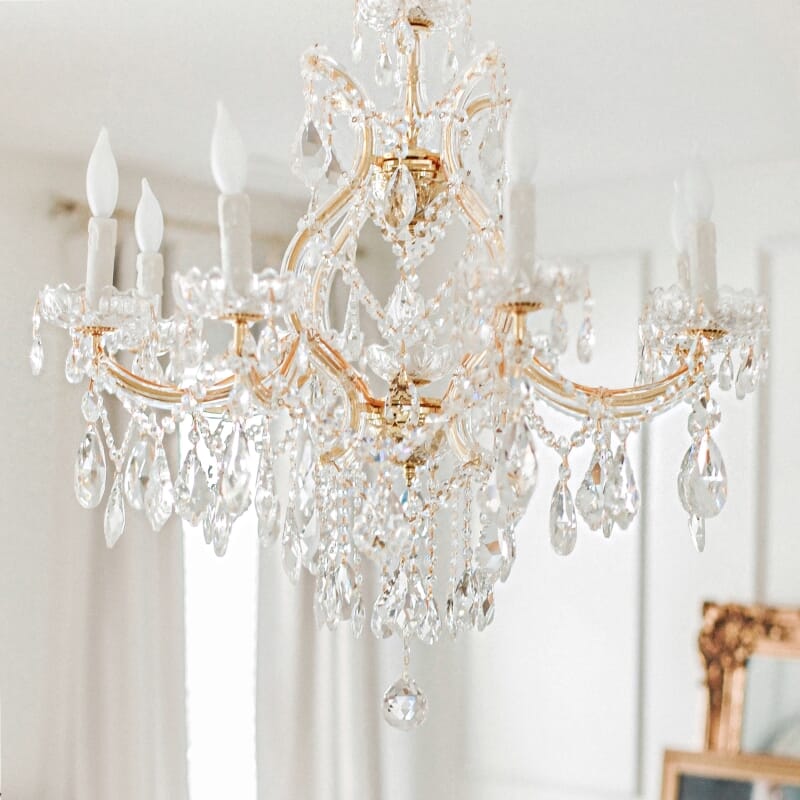
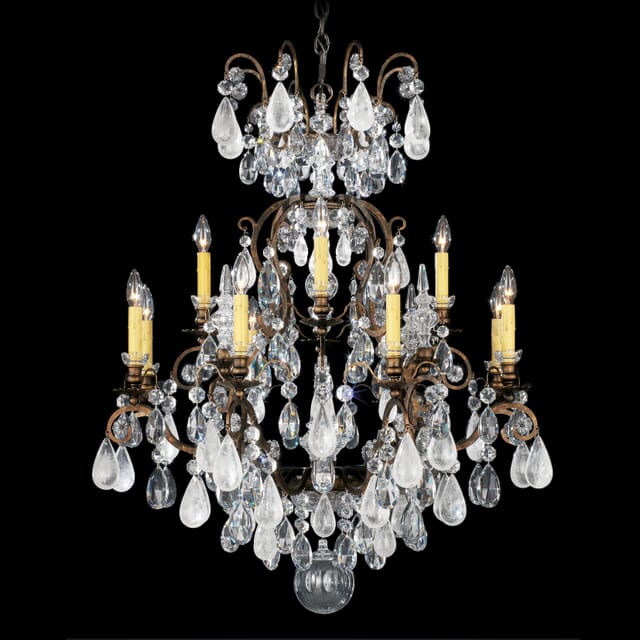
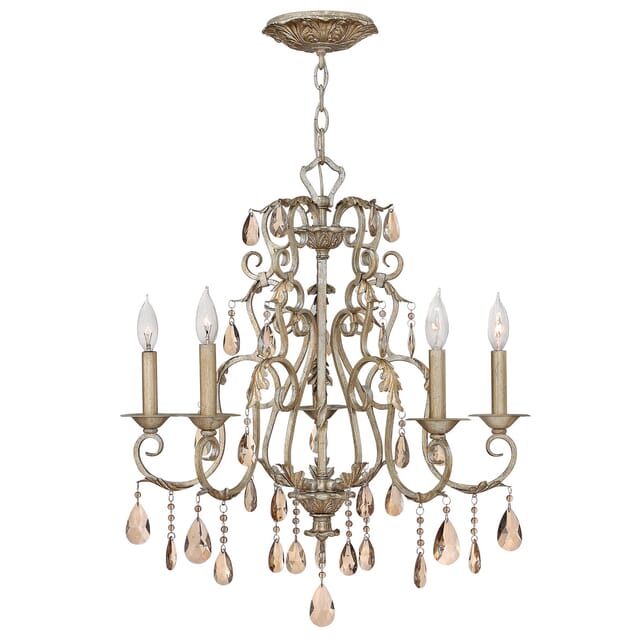
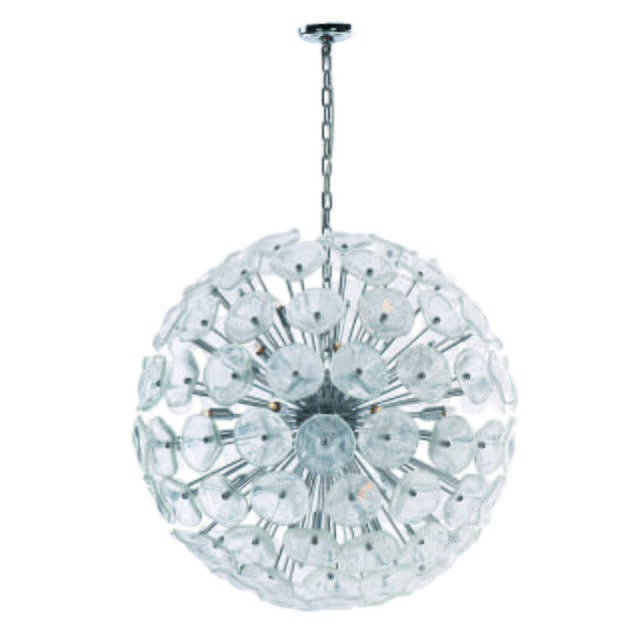

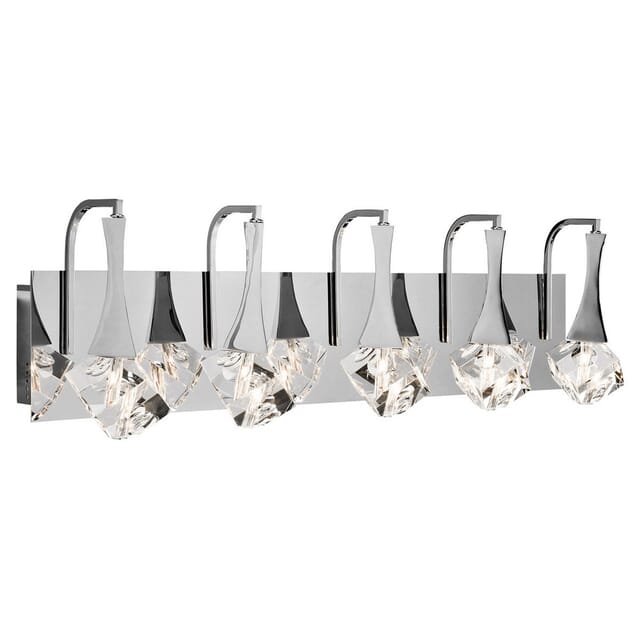



January 3, 2023
[…] marble and crystal – two other icons of luxury in home décor – alabaster is timeless in its look and appeal. […]
July 27, 2023
[…] It’s a classic for a reason: the traditional crystal chandelier is always going to be a beautiful way to light your dining room, especially if you are lighting a formal dining room or one that may only be pressed into service during the holidays. Crystal chandeliers create lots of shimmer and shine, plus they come in a wide variety of sizes and prices. (Learn more about the different crystals used in chandeliers here.) […]